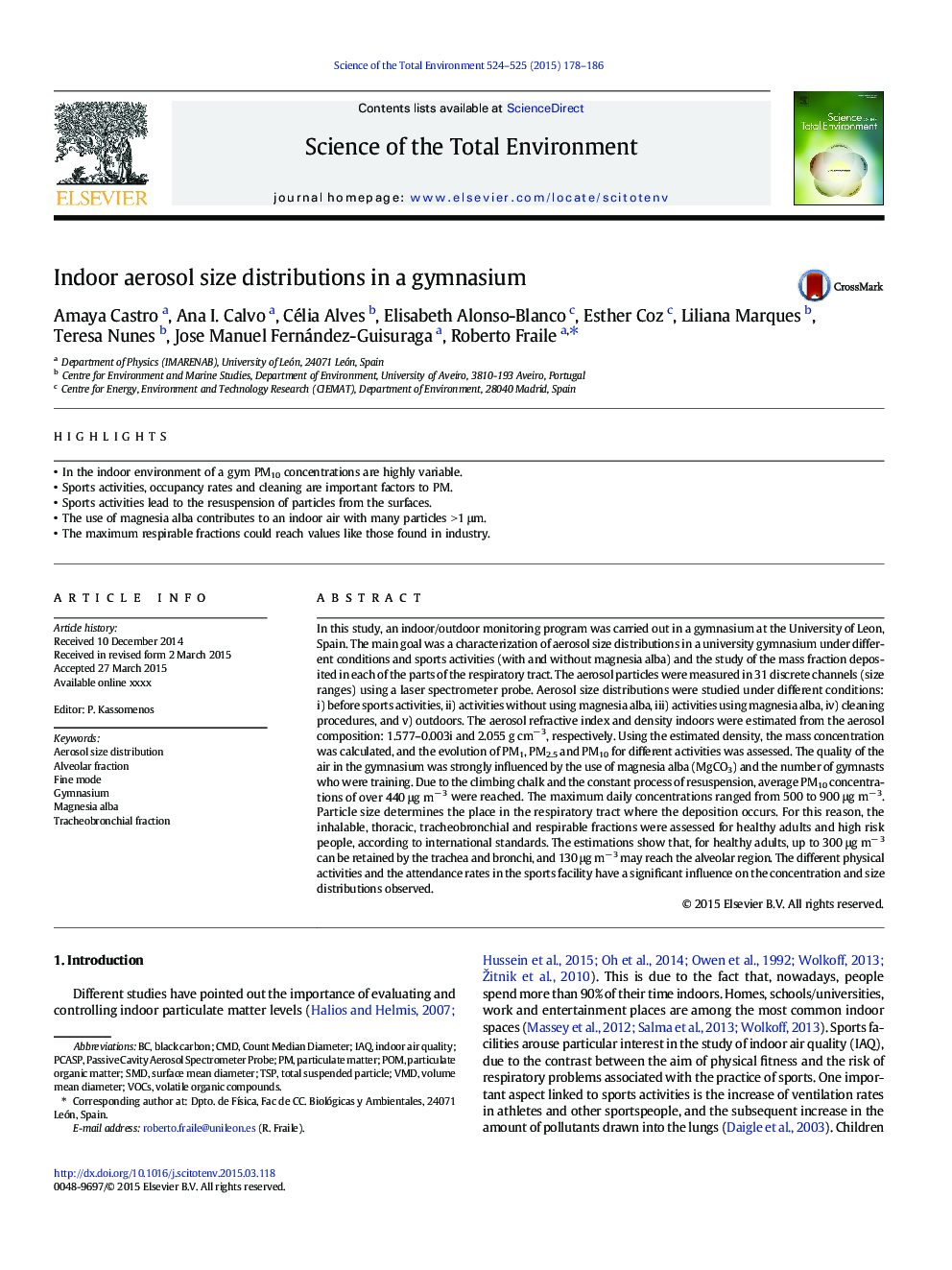| کد مقاله | کد نشریه | سال انتشار | مقاله انگلیسی | نسخه تمام متن |
|---|---|---|---|---|
| 6326719 | 1619757 | 2015 | 9 صفحه PDF | دانلود رایگان |
عنوان انگلیسی مقاله ISI
Indoor aerosol size distributions in a gymnasium
ترجمه فارسی عنوان
توزیع اندازه های آئروسل داخل در یک ژیمناستیک
دانلود مقاله + سفارش ترجمه
دانلود مقاله ISI انگلیسی
رایگان برای ایرانیان
کلمات کلیدی
موضوعات مرتبط
علوم زیستی و بیوفناوری
علوم محیط زیست
شیمی زیست محیطی
چکیده انگلیسی
In this study, an indoor/outdoor monitoring program was carried out in a gymnasium at the University of Leon, Spain. The main goal was a characterization of aerosol size distributions in a university gymnasium under different conditions and sports activities (with and without magnesia alba) and the study of the mass fraction deposited in each of the parts of the respiratory tract. The aerosol particles were measured in 31 discrete channels (size ranges) using a laser spectrometer probe. Aerosol size distributions were studied under different conditions: i) before sports activities, ii) activities without using magnesia alba, iii) activities using magnesia alba, iv) cleaning procedures, and v) outdoors. The aerosol refractive index and density indoors were estimated from the aerosol composition: 1.577-0.003i and 2.055 g cmâ 3, respectively. Using the estimated density, the mass concentration was calculated, and the evolution of PM1, PM2.5 and PM10 for different activities was assessed. The quality of the air in the gymnasium was strongly influenced by the use of magnesia alba (MgCO3) and the number of gymnasts who were training. Due to the climbing chalk and the constant process of resuspension, average PM10 concentrations of over 440 μg mâ 3 were reached. The maximum daily concentrations ranged from 500 to 900 μg mâ 3. Particle size determines the place in the respiratory tract where the deposition occurs. For this reason, the inhalable, thoracic, tracheobronchial and respirable fractions were assessed for healthy adults and high risk people, according to international standards. The estimations show that, for healthy adults, up to 300 μg mâ 3 can be retained by the trachea and bronchi, and 130 μg mâ 3 may reach the alveolar region. The different physical activities and the attendance rates in the sports facility have a significant influence on the concentration and size distributions observed.
ناشر
Database: Elsevier - ScienceDirect (ساینس دایرکت)
Journal: Science of The Total Environment - Volumes 524â525, 15 August 2015, Pages 178-186
Journal: Science of The Total Environment - Volumes 524â525, 15 August 2015, Pages 178-186
نویسندگان
Amaya Castro, Ana I. Calvo, Célia Alves, Elisabeth Alonso-Blanco, Esther Coz, Liliana Marques, Teresa Nunes, Jose Manuel Fernández-Guisuraga, Roberto Fraile,
